Did you know that according to a Harvard Business Review study up to 80% of job applicants cannot convincingly link their experience to the specific needs of the company in a cover letter? Nevertheless, the cover letter is often what decides an invitation to an interview, especially in the competitive environment of the Czech job market.
How to write a cover letter
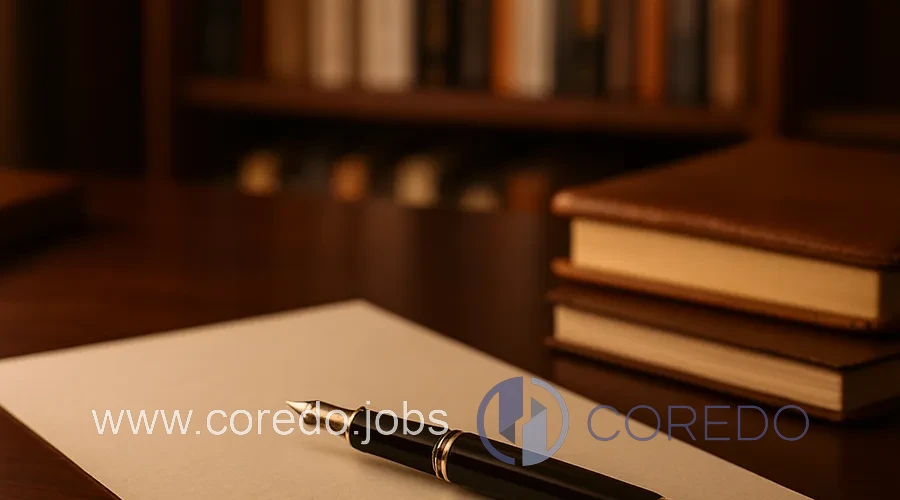
Structure of the cover letter
From my experience the structure of the cover letter is the foundation of success. A proven framework recommended by the experts at COREDO.jobs includes:
- Header: Contact details, date, addressee.
- Salutation: Personalized, ideally addressed to a specific person.
- Introduction: Brief presentation, clear reason for interest in the position.
- Main part: Linking experiences and skills with the company’s requirements. In the practice of the wood-processing industry it proved effective to cite specific projects that reflect the employer’s needs.
- Conclusion: A call for further contact, a thank you.
- Signature: Name, possibly a digital signature.
A tailored cover letter means that each part corresponds to the specific position and company culture. In the case of metallurgy, for example, we recommended emphasizing teamwork and the ability to adapt to new technologies.
“Length and essentials of the letter”
I recommend keeping to the length of 1 A4 page. The style should be formal but clear – avoid complex sentences that may seem inauthentic. The cover letter and CV should be linked: in the letter follow up on key points from the CV, but expand them with concrete motivation and the benefit for the company. Experts at COREDO.jobs recommend using clear typography, a consistent format and a clear division of the text, which increases readability and compatibility with digital systems (for example ATS).
The following section will focus on additional details that can help you improve your application, such as choosing relevant attachments and other strategies to attract the attention of a potential employer.
How to write a cover letter without clichés?
Authenticity and originality are crucial today. A cover letter without clichés means avoiding phrases like “I am a team player” or “I am interested in working at your dynamic company”. From our observations in the financial services sector it follows that recruiters appreciate concrete examples, numbers and mentions of real results. It is recommended to formulate your motivation and contribution so that it is clearly distinguishable from other candidates.
Cover letters: Get noticed
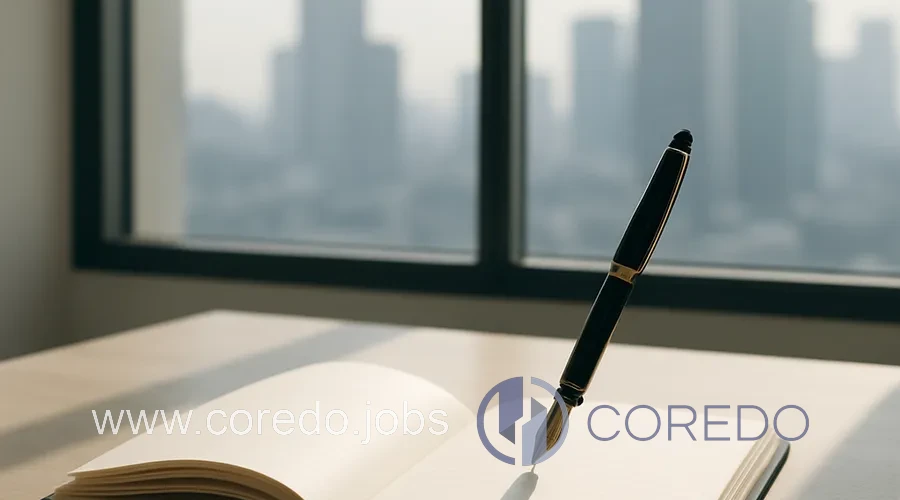
Cover letters: Get noticed are a key tool for standing out in today’s competition and capturing the attention of a potential employer. A well-written cover letter can briefly and clearly present your strengths and guide the reader to the next steps, so it is important to adapt it to different groups of applicants. The following subheadings will show you how to respond effectively.
Cover letter for different groups
A cover letter for managers should reflect strategic thinking, the ability to lead a team and manage change. In projects for management we verified that it is appropriate to provide concrete examples of successful leadership of people or projects. For entrepreneurs I recommend emphasizing innovation, the ability to scale processes and a results orientation. Marketers should show analytical skills, creativity and experience with digital marketing in the letter. In hospitality it proved effective to link the cover letter to a story about customer experience, which increases the candidate’s memorability.
How to write a cover letter when changing industries
When changing industries it is important to emphasize new skills and the ability to adapt. In practice at COREDO.jobs we helped candidates move from laboratories to a pharmaceutical company by highlighting transferable competencies in the cover letter – for example analytical thinking, data handling skills, and attention to detail. It is recommended to provide concrete examples of how you will use new skills in the target industry.
Effective cover letters
A sample cover letter that we applied in metal production contained:
- Introduction: “Your production automation project caught my interest because of the emphasis on innovation, which resonates with me from my previous role in mechanical engineering.”
- Main part: “Last year I led a team that implemented a robotic line, which increased productivity by 30%. I would like to put my experience to use in your team.”
- Conclusion: “I look forward to the opportunity to contribute to the further development of your company.”
We used similar examples successfully in an online shop, where a personalized cover letter increased the chance of an interview by 40% compared to generic templates.
How to write a good cover letter?
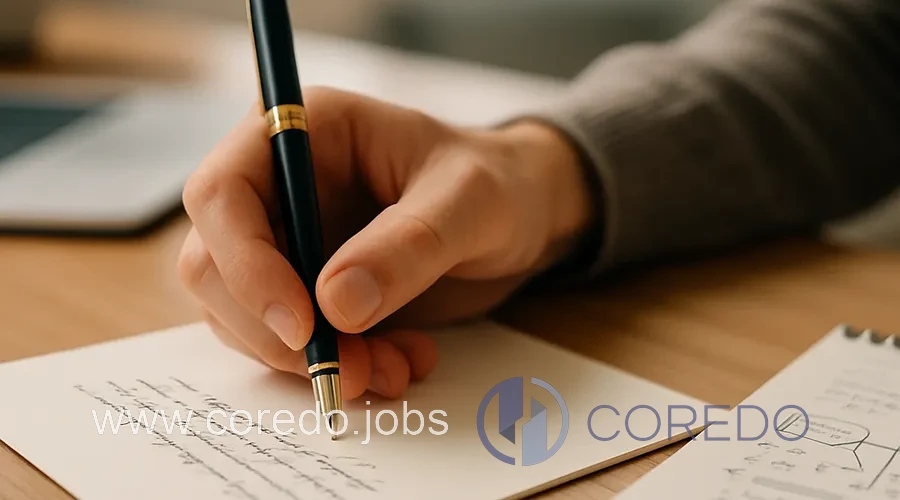
A properly written cover letter is the key to how to catch an employer’s attention and significantly increase your chances of obtaining your dream position. A “good cover letter” should be not only formally correct, but above all tailored to the specific company and position you are applying for, so that the reader recognizes your motivation, knowledge and ability to apply yourself prabelieve in this role. So how to start and what is really important when writing a cover letter?
How to tailor a cover letter to the company and the position
A personalized cover letter starts with thorough research of the company. I recommend analyzing the corporate culture, values and current projects. At COREDO.jobs, for example, we advised candidates applying to a construction company to highlight project management experience, knowledge of modern construction technologies and a focus on workplace safety. Targeting a specific position means that in the letter you reflect the requirements from the job ad, while also offering something extra – for example experience with process digitization or leading a multicultural team.
Storytelling and personal branding in a cover letter?
Telling a story is an effective way to engage a recruiter. In practice at COREDO.jobs it proved useful to link the cover letter to the candidate’s personal brand – for example describe how you handled a specific challenge, what the outcome was and what you learned. Storytelling increases memorability and supports personal branding. It is recommended to include concrete situations that show your values, motivation and long-term professional development.
How to express career ambitions?
The cover letter and career ambitions should be connected to a long-term plan. In projects for banks we recommended that candidates formulate how they want to develop their skills, what goals they have set and how they can contribute to the company’s growth. Long-term impact means that in the letter you show how your experience and motivation support the employer’s strategy – for example increasing revenues, innovation or expansion into new markets.
Optimizing a cover letter with modern technologies
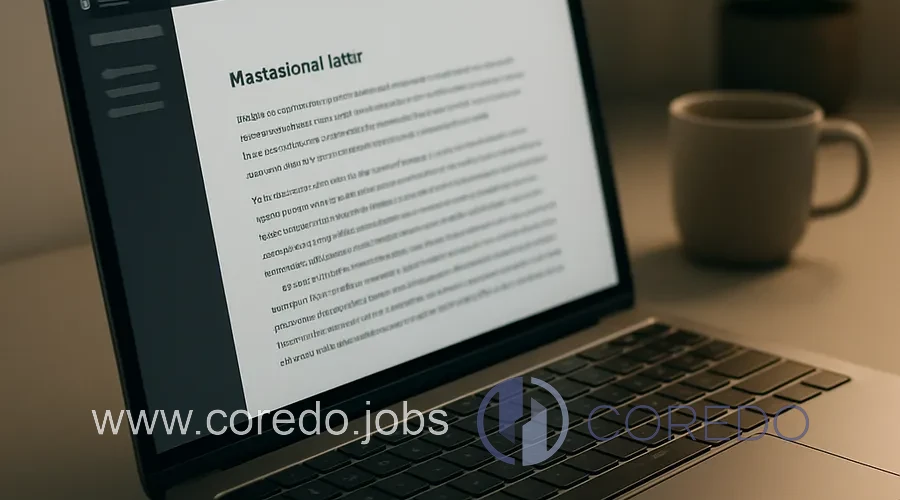
Optimizing a cover letter with modern technologies opens up new possibilities to improve the quality and efficiency of its creation. Today, artificial intelligence and digital tools can help tailor content precisely to the requirements of the job position while saving time and effort in writing.
How to write a cover letter with the help of AI and digital tools?
Digitalization of HR processes fundamentally changes the way companies and candidates create and evaluate cover letters. At COREDO.jobs we verified that automation and AI in recruitment enable faster text analysis, validation of keywords and optimization for specific positions. Adaptive writing using machine learning helps scale the process of creating cover letters, especially when recruiting a larger number of candidates. Neural networks can then analyze tone, style and degree of personalization, which increases the chance of success.
How to ensure cover letter compatibility with ATS
ATS (Applicant Tracking System) is now a standard in recruitment. I recommend using a clear structure, keywords from the job ad and avoiding complex formats (tables, images). Optimization for job portal search engines means the cover letter is easy to find and does not get lost in automatic sorting. In projects for a laboratory we verified that proper ATS compatibility increased the number of interview invitations by 25%.
How to address the risks and ethics of automated letter writing?
Experts from COREDO.jobs recommend validating automatically generated letters with a human review, adjusting the style and checking the relevance of the content. Ethical aspects include transparency, protection of personal data and respect for corporate culture. In practice it is advisable to combine digital tools with an individual approach, which minimizes risks and supports credibility.
“How to measure success and scale cover letters”
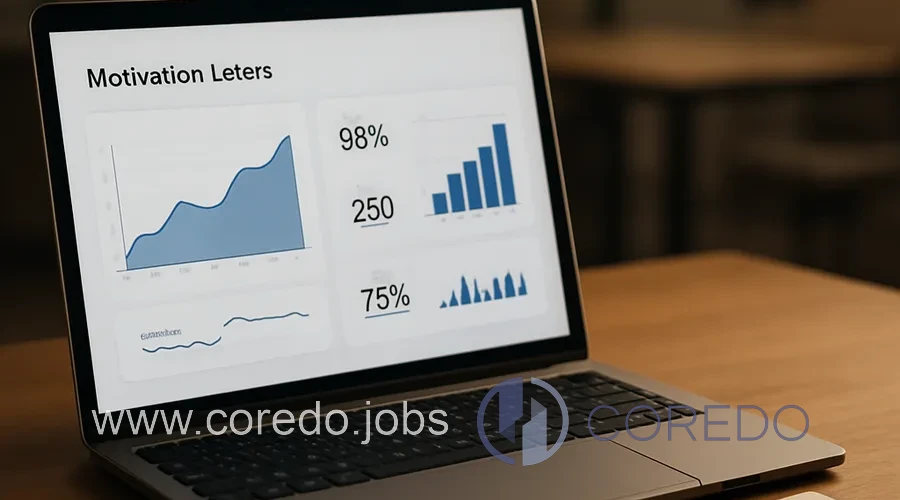
Success and scaling of cover letters are key factors for effective applications in today’s job market. Measuring success by the return on investment (ROI) of cover letters is essential for understanding the effectiveness of our strategy. In this context we will focus on measuring ROI and scaling cover letters to ensure the greatest possible impact on job applications.
Now we will look at specific procedures and proven methods for writing and adapting cover letters effectively to particular job positions.
How to measure the ROI of a cover letter?
ROI in HR means tracking the ratio between the number of sent cover letters and the number of interview invitations. At COREDO.jobs we set metrics such as CTR (Click-Through Rate) on job portals, the number of positive responses and the time until receiving a job offer. Data validation and feedback from employers enable continuous optimization of letter content and increase their effectiveness.
Scaling cover letter writing when recruiting for positions
When recruiting a larger number of candidates, digitalizing the workflow is crucial. In projects for an online store we used automated letter generators that we then personalized according to specific requirements. Effective scaling means maintaining high quality even at large volume – it is recommended to use digital templates, AI tools and regular human expert review.
How does a cover letter influence HR managers?
From our observations at COREDO.jobs, HR managers emphasize psychological aspects of motivation, authenticity and the candidate’s ability to reflect company values. Behavioral economics in recruitment shows that a personalized cover letter increases the likelihood of a positive decision. Key success factors include clear messaging, concrete examples and the ability to link personal ambitions with the company’s needs.
Conclusion of the article
A cover letter that really works is the result of thoughtful personalization, strategic writing and the use of modern technologies. The practice at COREDO.jobs confirms that combining experience, authenticity and digital optimization leads to higher recruitment efficiency and long-term professional development. I recommend using the outlined procedures and creating your own cover letter that will reflect your ambitions, values and the specific needs of the company. If you are looking for further inspiration or professional support, the COREDO.jobs team is ready to share experiences from dozens of successful projects across industries.






